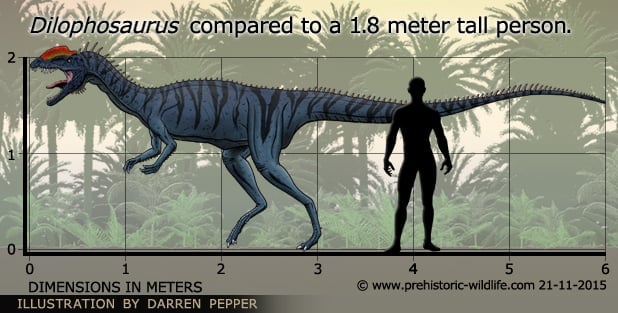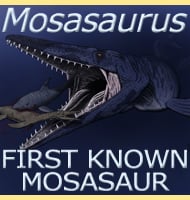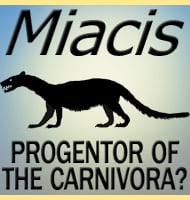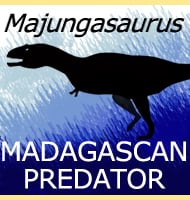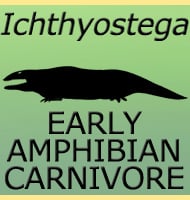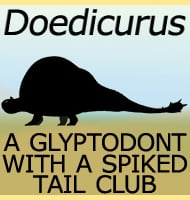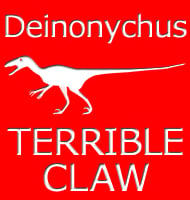In Depth
Dilophosaurus is a very distinctive dinosaur that is instantly recognisable by the two crests that are on top of its neck. It must be remembered however that Dilophosaurus never had a neck frill or spat venom, as was depicted in the 1993 film Jurassic Park. Those were the creations of artistic licence, not paleontological fact.
The crests themselves are most likely there for display, and could have been brightly coloured, particularly in the males. The crests are usually found disarticulated from the skull, but careful reconstruction has shown that they most likely sat on top of the skull. This arrangement is also considered more accurate than some earlier artistic reconstructions that have the crests running from the back of the skull and onto the neck. Such a reconstruction would have restricted the movement of the neck vertebra, a flawed configuration for a predator, hence the acceptance of the crests on top of the skull.
The skull also features a large notch in the upper jaw between the teeth of the pre-maxilla and maxilla. This notch is actually an inherent weakness in the skull and suggests that Dilophosaurus probably did not have a high bite force as other similarly sized dinosaurs that lacked the notch. One theory is that the notch would have enabled Dilophosaurus to dig out small prey items out of things like rock crevices, although bearing in mind that it was six meters long, it would not really be an efficient method of feeding for such a large dinosaur. Another theory is that Dilophosaurus lived the life of a scavenger. In this scenario Dilophosaurus would only need a bite force large enough to tear meat from a carcass, and could have used its size to intimidate and drive off smaller carnivores from their kill.
The notch may yet prove to be a bit of a red herring in describing its feeding behaviour. There were other dinosaurs present that were well within the predatory scope of Dilophosaurus and it may have also employed the use of its claws in making kills. The notch may have even been of use in picking flesh off the bones off kills as a weaker bite force would mean that Dilophosaurus may have had difficulty in crunching bones. All that can be said is that carnivores in general will kill an animal for food when able, but will also scavenge carrion when the opportunity presents itself.
A smaller version of this notch is also present in the earlier dinosaur Coelophysis, and it is part of the reason why some palaeontologists think that Dilophosaurus and Coelophysis have a common lineage, with Dilophosaurus maybe being a direct descendent of Coelophysis. Unfortunately there are so many possible ways that Coelophysis fits in with other dinosaurs that it’s hard to pick one out as being more likely.
One Dilophosaurus specimen shows an underdeveloped left arm that has a reduced humerus, while the right is quite robust. This discrepancy may have been caused by harsh living conditions and could be an example of fluctuating asymmetry. The majority of animal organisms have completely symmetrical body morphology and when one differs from the rest in this way, the answer is either genetic or the result of an outside factor.
When first discovered in 1942, the Dilophosaurus specimen was lacking the head crests and was named Megalosaurus wetherilli. It was not until another and more complete specimen that featured the crests was recovered over a decade later that the distinction could be made. The fact that three Dilophosaurus individuals were found together has lent support to the theory that some dinosaurs hunted in packs. Dilophsaurus is now the type genus of its own special group of theropod dinosaurs called the Dilophosauridae.
In 1993 a second species of Dilophsaurus called D. sinensis was named. Later analysis of this species however has now determined that it is not a species of Dilophosaurus but a separate genus, and is now known as Sinosaurus.
Further Reading
– Dilophosaurus (Reptilia: Saurischia), a new name for a dinosaur. – Journal of Paleontology 44:989. – S. P. Welles – 1970. – Dilophosaurus wetherilli (Dinosauria, Theropoda), osteology and comparison. – Palaeontogr. Abt. A 185: 85–180. – S. P. Welles – 1984. – Multi-element osteohistological analysis of Dilphosaurus wetherilli. – Journal of Vertebrate Paleontology, v. 16, supplement to n. 3, Abstracts of Papers, Fifty-sixth Annual Meeting, Society of Vertebrate Paleontology, American Museum of Natural History, New York, New York. – J. S. Tkach – 1996. – New specimens of Dilophosaurus wetherilli (Dinosauria: Theropoda) from the early Jurassic Kayenta Formation of northern Arizona. – Western Association of Vertebrate Paleontologists annual meeting volume Mesa, Arizona 1: 1. – Robert Gay – 2001. – Evidence for sexual dimorphism in the Early Jurassic theropod dinosaur, Dilophosaurus and a comparison with other related forms In: Carpenter, Ken, ed. The Carnivorous Dinosaurs. – The Carnivorous Dinosaurs. Indiana University Press. pp. 277–283. – Robert Gay – 2005. – Forelimbs of the theropod dinosaur Dilophosaurus wetherilli: Range of motion, influence of paleopathology and soft tissues, and description of a distal carpal bone. – Palaeontologia Electronica. – P. Senter & C. Sullivan – 2019. – A comprehensive anatomical and phylogenetic evaluation of Dilophosaurus wetherilli (Dinosauria, Theropoda) with descriptions of new specimens from the Kayenta Formation of northern Arizona. – Journal of Paleontology. 94 (S78): 1–103. – A. D. Marsh & T. B. Rowe – 2020.
